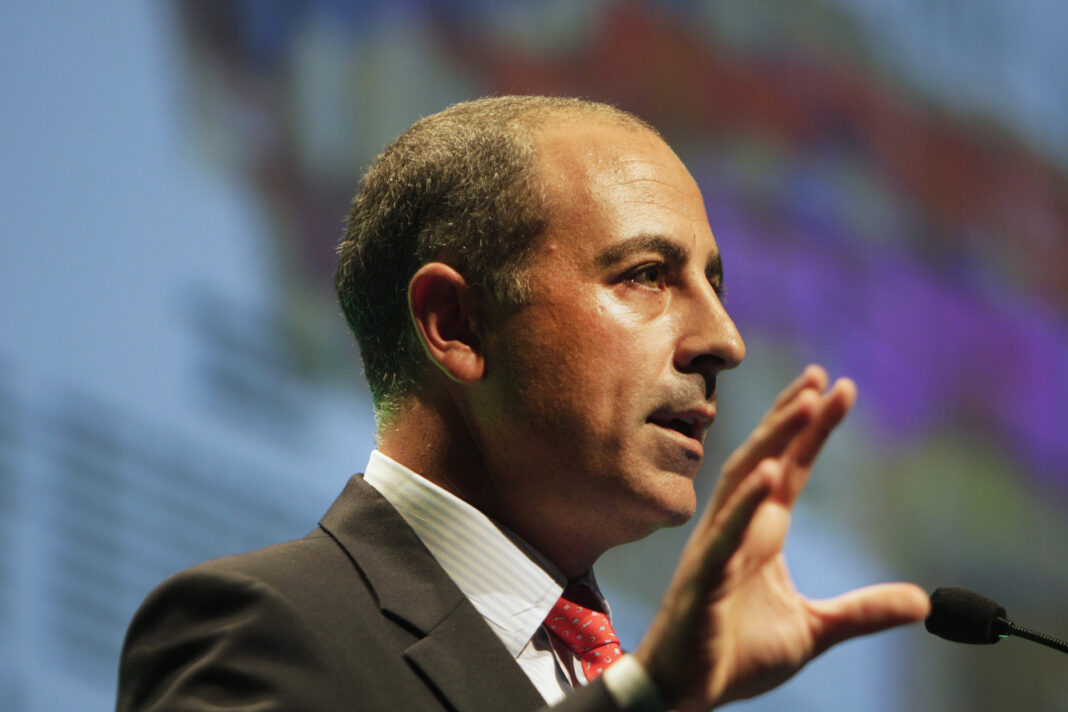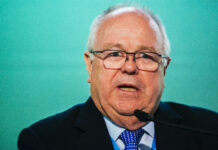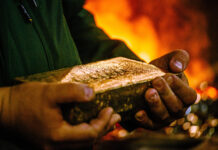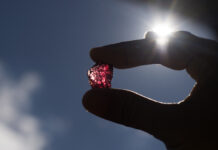Perth-based Wia Gold, helmed by the former Centamin team, is mapping a path to near-term production from its Kokoseb gold project in Namibia.
Kokoseb has a resource of 66 million tons at one gram per ton gold for 2.12 million ounces of gold, discovered at a cost of just $2.80/oz over the past three years. Mineralisation is open in all directions and at depth, with drilling results released in June from beneath the resource pit shell.
Wia has had up to six rigs drilling at Kokoseb since the start of this year, with an updated resource due in early July. “We will roll that into the scoping study work that’s been going all year, and deliver that sometime in the third calendar quarter,” Wia executive chair Josef El-Raghy says.
“We’re doing that so that we can deliver that to the government in Namibia and apply for the mining licence,” he adds.
The scoping study will feed straight into a definitive feasibility study, which the company is aiming to complete by mid-2026. “We’ll keep drilling until then and probably after then as well, because the project will need more drilling and it’ll keep growing,” El-Raghy said. Wia is eyeing a 5mt/y operation to produce around 150,000oz of gold annually.
In an initiation note released in March, London’s Tamesis Partners suggested there was already enough critical mass at Kokoseb for a 5mt/y mine to produce around 150,000oz/y at all-in sustaining costs of around $1,300/oz over more than 15 years.
“It’ll be a good mine for many years,” El-Raghy said. “It looked like a mine probably a year or so ago, and the drilling and all these updates over the past year made it look more like a mine, so we’re pretty happy.
“I would hope by the end of next year we’ve got the definitive feasibility study completed, buying licence in place, environmental in place, and you know, you’ll be looking at pushing this project forward.”
It’ll be a good mine for many years … It looked like a mine probably a year or so ago, and the drilling and all these updates over the past year made it look more like a mine, so we’re pretty happy
Josef El-Raghy
SCP Equity Research agrees. “Big picture, we think Kokoseb is now becoming well established as one of the next-generation ‘will be a mine’ projects, with the ounces for 100,000-200,000oz a year, located in a sought-after jurisdiction and backed by a proven management team,” it said in June.
Kokoseb has been compared to the nearby Twin Hills project, given their similar-sized resources and grade profiles. Twin Hills, which is under construction, is expected to produce 162,000oz a year of gold from a 5mt/y plant. Twin Hills was being developed by Canada’s Osino Resources, led by Namibian Heye Daun, when it was acquired last year for C$368m by China’s Shanjin International Gold Co., trumping an earlier C$287m bid by Dundee Precious Metals.
Once in production, it will be Namibia’s third operating gold mine, with Kokoseb in line to be the fourth. Australia’s Lycopodium is the engineering, procurement and construction management contractor for Twin Hills.
“Lycopodium are doing all the work for us on plant design, so we’re not trying to recreate the world,” El-Raghy said. “We’re using a lot of the same people Twin Hills used and going down the same permitting path and then the same construction path.”
NAMIBIA
El-Raghy is best known as the former CEO and chair of Centamin, growing the company from a Perth-based junior to a multibillion-dollar London-listed gold producer through the development of the Sukari mine in Egypt. AngloGold Ashanti acquired Centamin for $2.5bn last year.
El-Raghy said his desire to get into Namibia dated back to the Centamin days when the company tried to buy Auryx Gold Corp, owner of the Otjikoto gold project, in 2011. “B2Gold ended up taking it over, and we sold our stake to B2 and made a bit of money,” he said.
“We also tried to buy Navachab, which is the other operating gold mine. I’ve had a few goes at trying to get into Namibia, because I’ve always thought it was a great place to operate.”
El-Raghy was a shareholder of Osino, as well as a shareholder in Wia, which was previously chaired by his former Centamin colleague Andrew Pardey. “We’d been funding [Wia] with no management to keep overheads low. “It started looking like it needed a bit of help so I thought I’d do it for a little while.”
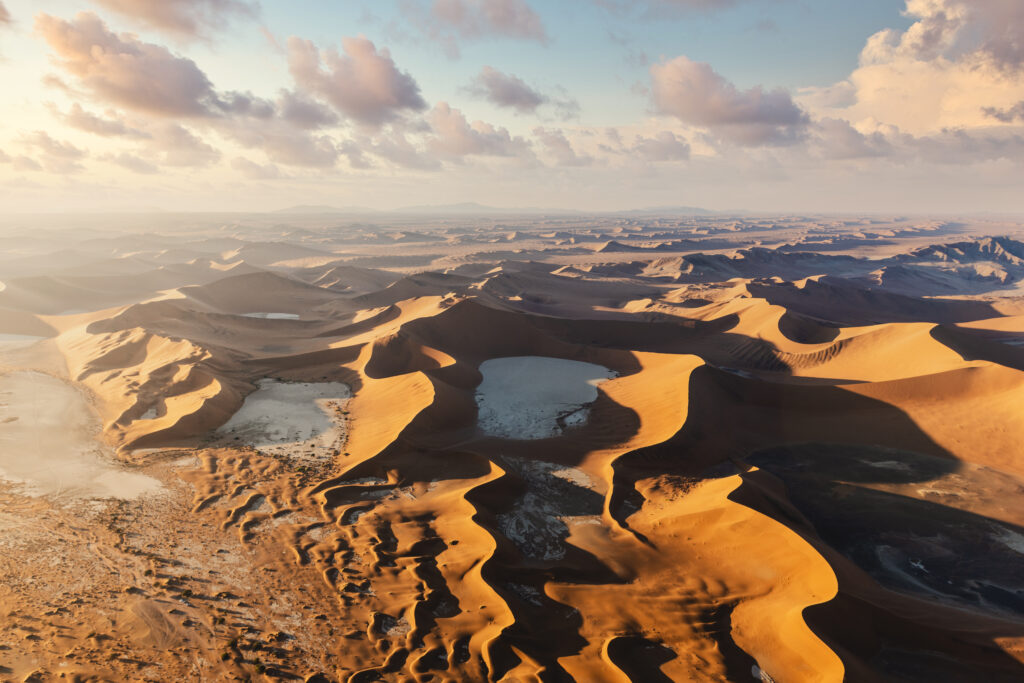
In mid-2024, Pardey, also MD of Guinea-focused gold developer Predictive Discovery, stepped down as chair to become a non-executive director and El-Raghy became executive chair. “He was chair but busy with Predictive, so I said I’d step in and do this for a year or two as exec,” El-Raghy said.
“In that two-year period, we’ll find a CEO, so that’s on the to-do list. We’ve got a CEO, hopefully on the way that will build [the project].”
El-Raghy doesn’t take a salary but has long-term incentives tied to performance milestones and also owns nearly 6.4% of the company.
Rounding out the board is another former Centamin executive, Mark Arnesen, while former Centamin exploration manager Pierrick Couderc holds the same role at Wia. “So it’s a neat little team with the
Centamin people on the board,” El-Raghy said. “We all get on. We don’t need to talk every day. Everyone just gets their job done.”
Shares in Wia have risen by more than 1,000% on the Australian Securities Exchange in just two years, with May 2023 marking the company’s maiden resource and the emergence of El-Raghy as a substantial shareholder. The stock more than doubled over the 12 months to June 30 this year and was up by almost 80% year-to-date. The company’s market capitalisation has surpassed A$300m in the process.
In March, S&P Dow Jones Indices announced that Wia would be added to the ASX’s All Ordinaries index as part of its quarterly index rebalance. Analysts believe the company’s share price will continue to rise.
Tamesis has a price target of A40c and SCP has a price target of A45c, while Australia’s Argonaut is more bullish, with a price target of A61c. “Kokoseb remains an attractive M&A target as a straightforward large-scale open-pit project located within a safe and stable mining jurisdiction of Namibia,” Argonaut analyst Patrick Streater recently said.

